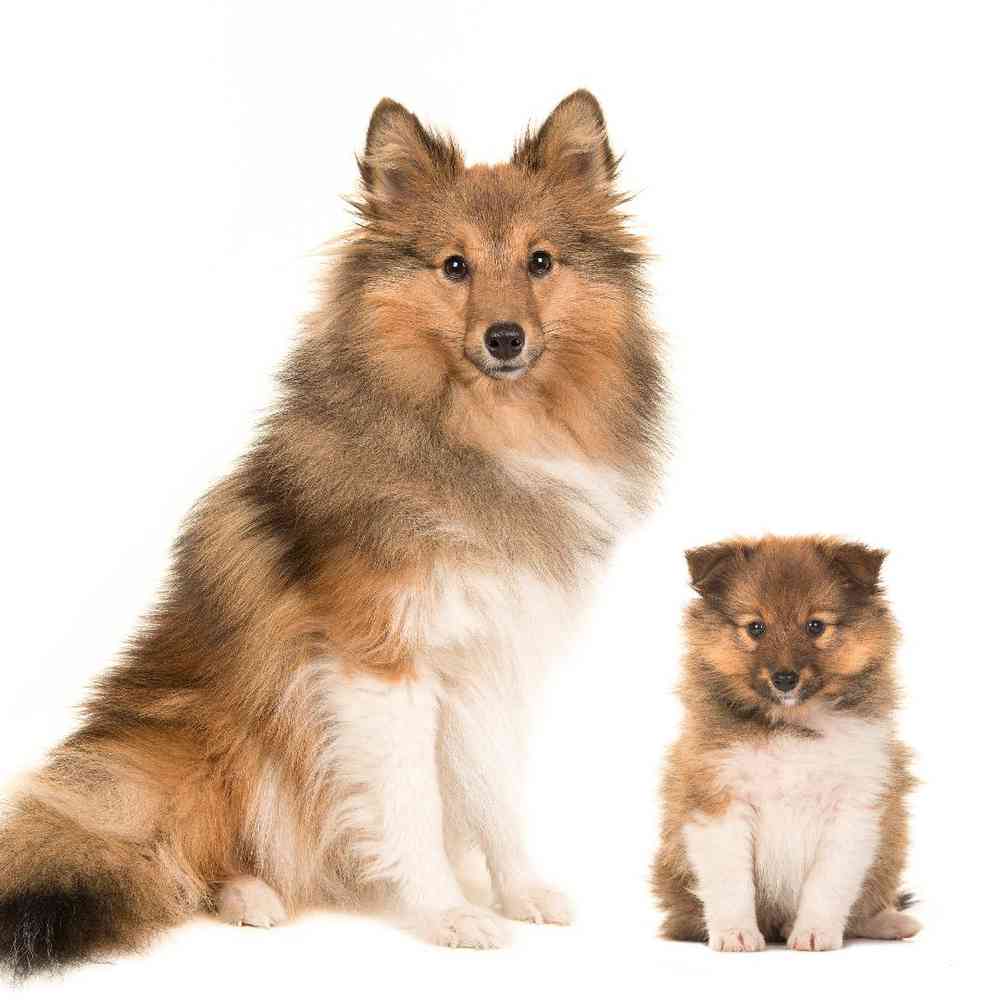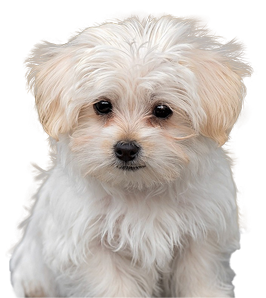
AKC Registrable
Apartment Friendly
Family Dog
Sheltie
The Shetland Sheepdog, also known as the Sheltie, is an extremely intelligent, quick, and obedient herder from Scotland’s remote and rugged Shetland Islands. Shelties bear a strong family resemblance to their bigger cousin, the Collie.
Available Pups
Puppy Knowledge
Breed Info
Clubs, Registries & Associations
American Canine Association Continental Kennel Club Universal Kennel Club International American Kennel Club United All Breed Registry America's Pet Registry, Inc. United Kennel Club (Based on breed recognition. See store for details on this particular puppy.)
Group
Herding
Heritage
Originating in the 18th century the Shetland Sheepdog was used to guard and herd sheep flocks in the Scottish island of Shetland. This breed is great with herding, tracking, competitive obedience, agility, flyball and is an able guard and watch dog.
Description
Small, 13-16” at the shoulders, weighing anywhere from 14-27 pounds. The Shetland Sheepdog is a sturdy dog with a double coat that comes in colors of sable and tri-color, blue merle, white and black, and white, black and gray. The outer coat is weather-repellent, long, straight and rough; the under coat is thick and soft.
Health Awareness
The Shetland Sheepdog Dog has a life expectancy of 12-15 years and is prone to eye problems, hypothyroidism, patella displacement, epilepsy, hip dysplasia, skin allergies and Von Willebrand disease
Personality
The Shetland Sheepdog is a kind, loving and devoted companion dog loving to be with the family. They are alert, highly intelligent and enjoy learning from you. They like to bark and communicate with you with grunts, yips and whines. They like to herd anything and anyone that moves. This breed needs a lot of early socialization because they are wary of strangers and that can lead to guarding behavior. You need to be a calm, knowledgeable and humane owner giving consistent boundaries using only motivational training methods. And a fenced yard is a must.
Additional Information
Grooming Requirements: Requires regular brushing and bathe only when necessary. Coat: Long Shedding: Seasonally heavy shedding Hypoallergenic: No Apartment Living: Good for apartment living if given sufficient exercise Lap Dog: No Good With Children: Generally good with children when well socialized at an early age Good With Other Pets: Generally good with other pets when well socialized at an early age
Breed Standard
General Appearance
Preamble-- The Shetland Sheepdog, like the Collie, traces to the Border Collie of Scotland, which, transported to the Shetland Islands and crossed with small, intelligent, longhaired breeds, was reduced to miniature proportions. Subsequently crosses were made from time to time with Collies. This breed now bears the same relationship in size and general appearance to the Rough Collie as the Shetland Pony does to some of the larger breeds of horses. Although the resemblance between the Shetland Sheepdog and the Rough Collie is marked, there are differences which may be noted. The Shetland Sheepdog is a small, alert, rough-coated, longhaired working dog. He must be sound, agile and sturdy. The outline should be so symmetrical that no part appears out of proportion to the whole. Dogs should appear masculine; bitches feminine.
Size, Proportion, Substance
The Shetland Sheepdog should stand between 13 and 16 inches at the shoulder. Note: Height is determined by a line perpendicular to the ground from the top of the shoulder blades, the dog standing naturally, with forelegs parallel to line of measurement. Disqualifications-- Heights below or above the desired size range are to be disqualified from the show ring. In overall appearance, the body should appear moderately long as measured from shoulder joint to ischium (rearmost extremity of the pelvic bone), but much of this length is actually due to the proper angulation and breadth of the shoulder and hindquarter, as the back itself should be comparatively short.
Head
The head should be refined and its shape, when viewed from top or side, should be a long, blunt wedge tapering slightly from ears to nose. Expression-- Contours and chiseling of the head, the shape, set and use of ears, the placement, shape and color of the eyes combine to produce expression. Normally the expression should be alert, gentle, intelligent and questioning. Toward strangers the eyes should show watchfulness and reserve, but no fear. Eyes medium size with dark, almond-shaped rims, set somewhat obliquely in skull. Color must be dark, with blue or merle eyes permissible in blue merles only. Faults-- Light, round, large or too small. Prominent haws. Ears small and flexible, placed high, carried three-fourths erect, with tips breaking forward. When in repose the ears fold lengthwise and are thrown back into the frill. Faults-- Set too low. Hound, prick, bat, twisted ears. Leather too thick or too thin. Skull and Muzzle Top of skull should be flat, showing no prominence at nuchal crest (the top of the occiput). Cheeks should be flat and should merge smoothly into a well-rounded muzzle. Skull and muzzle should be of equal length, balance point being inner corner of eye. In profile the top line of skull should parallel the top line of muzzle, but on a higher plane due to the presence of a slight but definite stop. Jaws clean and powerful. The deep, well-developed underjaw, rounded at chin, should extend to base of nostril. Nose must be black. Lips tight. Upper and lower lips must meet and fit smoothly together all the way around. Teeth level and evenly spaced. Scissors bite. Faults-- Two-angled head. Too prominent stop, or no stop. Overfill below, between, or above eyes. Prominent nuchal crest. Domed skull. Prominent cheekbones. Snipy muzzle. Short, receding, or shallow underjaw, lacking breadth and depth. Overshot or undershot, missing or crooked teeth. Teeth visible when mouth is closed.
Neck, Topline, Body
Neck should be muscular, arched, and of sufficient length to carry the head proudly. Faults-- Too short and thick. Back should be level and strongly muscled. Chest should be deep, the brisket reaching to point of elbow. The ribs should be well sprung, but flattened at their lower half to allow free play of the foreleg and shoulder. Abdomen moderately tucked up. Faults-- Back too long, too short, swayed or roached. Barrel ribs. Slab-side. Chest narrow and/or too shallow. There should be a slight arch at the loins, and the croup should slope gradually to the rear. The hipbone (pelvis) should be set at a 30-degree angle to the spine. Faults-- Croup higher than withers. Croup too straight or too steep. The tail should be sufficiently long so that when it is laid along the back edge of the hind legs the last vertebra will reach the hock joint. Carriage of tail at rest is straight down or in a slight upward curve. When the dog is alert the tail is normally lifted, but it should not be curved forward over the back. Faults-- Too short. Twisted at end.
Forequarters
From the withers, the shoulder blades should slope at a 45-degree angle forward and downward to the shoulder joints. At the withers they are separated only by the vertebra, but they must slope outward sufficiently to accommodate the desired spring of rib. The upper arm should join the shoulder blade at as nearly as possible a right angle. Elbow joint should be equidistant from the ground and from the withers. Forelegs straight viewed from all angles, muscular and clean, and of strong bone. Pasterns very strong, sinewy and flexible. Dewclaws may be removed. Faults-- Insufficient angulation between shoulder and upper arm. Upper arm too short. Lack of outward slope of shoulders. Loose shoulders. Turning in or out of elbows. Crooked legs. Light bone. Feet should be oval and compact with the toes well arched and fitting tightly together. Pads deep and tough, nails hard and strong. Faults-- Feet turning in or out. Splay feet. Hare feet. Cat feet.
Hindquarters
The thigh should be broad and muscular. The thighbone should be set into the pelvis at a right angle corresponding to the angle of the shoulder blade and upper arm. Stifle bones join the thighbone and should be distinctly angled at the stifle joint. The overall length of the stifle should at least equal the length of the thighbone, and preferably should slightly exceed it. Hock joint should be clean-cut, angular, sinewy, with good bone and strong ligamentation. The hock (metatarsus) should be short and straight viewed from all angles. Dewclaws should be removed. Faults-- Narrow thighs. Cow-hocks. Hocks turning out. Poorly defined hock joint. Feet as in forequarters.
Coat
The coat should be double, the outer coat consisting of long, straight, harsh hair; the undercoat short, furry, and so dense as to give the entire coat its "standoff" quality. The hair on face, tips of ears and feet should be smooth. Mane and frill should be abundant, and particularly impressive in males. The forelegs well feathered, the hind legs heavily so, but smooth below the hock joint. Hair on tail profuse. Note: Excess-hair on ears, feet, and on hocks may be trimmed for the show ring. Faults-- Coat short or flat, in whole or in part; wavy, curly, soft or silky. Lack of undercoat. Smooth-coated specimens.
Gait
The trotting gait of the Shetland Sheepdog should denote effortless speed and smoothness. There should be no jerkiness, nor stiff, stilted, up-and-down movement. The drive should be from the rear, true and straight, dependent upon correct angulation, musculation, and ligamentation of the entire hindquarter, thus allowing the dog to reach well under his body with his hind foot and propel himself forward. Reach of stride of the foreleg is dependent upon correct angulation, musculation and ligamentation of the forequarters, together with correct width of chest and construction of rib cage. The foot should be lifted only enough to clear the ground as the leg swings forward. Viewed from the front, both forelegs and hindlegs should move forward almost perpendicular to ground at the walk, slanting a little inward at a slow trot, until at a swift trot the feet are brought so far inward toward center line of body that the tracks left show two parallel lines of footprints actually touching a center line at their inner edges. There should be no crossing of the feet nor throwing of the weight from side to side. Faults-- Stiff, short steps, with a choppy, jerky movement. Mincing steps, with a hopping up and down, or a balancing of weight from side to side (often erroneously admired as a "dancing gait" but permissible in young puppies). Lifting of front feet in hackney-like action, resulting in loss of speed and energy. Pacing gait.
Temperament
Playful, Energetic, Bright
Overview
About
The Shetland Sheepdog is a small, active, and agile herding dog standing between 13 and 16 inches at the shoulder. The long coat is harsh and straight, with a dense undercoat, and comes in black, blue merle, and sable, with white markings. The coat, along with a long, wedge-shaped head; small, three-quarter erect ears; and deep-chested, level-backed torso, give Shelties the look of a rough-coated Collie in miniature. Bright and eager Shelties are easy trainers and world-class competitors in obedience, agility, and herding trials. They are sensitive and affectionate family dogs, highly in tune with the mood of the household. They like to bark and tend to be reserved toward strangers—two qualifications of an excellent watchdog.
History
Shetland Sheepdogs were originally bred on the rocky Shetland Islands, the United Kingdom’s northernmost point. They were employed by farmers to herd sheep, ponies, and poultry. (“Toonie dog” was an old slang name for Shelties, “toon” being a Shetland word for farm.) There’s a reason why the Sheltie was bred smaller than his close cousin, the rough-coat Collie. Thanks to their compact size, the Sheltie eats less than the Collie and other large herding dogs. This is an important consideration in the harsh, cold climate of the breed’s homeland, where food can be scarce. This also explains the diminutive size of Shetland ponies. Exactly when Collies were imported to the island from the Scottish mainland and bred down to Sheltie size is a detail lost to history, as the islands’ breeders left behind no written records. And, because the islands were so inaccessible, Shelties lived in virtual isolation from other breeds and were nearly unknown in the rest of Britain until the early 20th century. The Sheltie was first recognized by the Kennel Club (England), as the Shetland Collie, in 1909. Under pressure from Collie fanciers, the breed name was changed soon after to Shetland Sheepdog. The AKC registered its first dog of this remarkably bright and obedient breed in 1911.
Standard
The Shetland Sheepdog is a small, alert, rough-coated, longhaired working dog. He must be sound, agile and sturdy. The outline should be so symmetrical that no part appears out of proportion to the whole. Dogs should appear masculine; bitches feminine.
Nutrition
The Shetland Sheepdog should do well on a high-quality dog food, whether commercially manufactured or home-prepared with your veterinarian’s supervision and approval. Any diet should be appropriate to the dog’s age (puppy, adult, or senior). Some dogs are prone to getting overweight, so watch your dog’s calorie consumption and weight level. Treats can be an important aid in training, but giving too many can cause obesity. Learn about which human foods are safe for dogs, and which are not. Check with your vet if you have any concerns about your dog’s weight or diet. Clean, fresh water should be available at all times.
Grooming
The Sheltie has a profuse double coat that sheds considerably. The outer coat consists of long, straight, harsh hair, while the undercoat is short, furry, and very dense. Owners must be prepared to brush the coat weekly, and more often during shedding season, to help in removing at least some of the loose hair before it drifts all over the house. Be sure to check for mats behind the ears, under the elbow on each front leg, and in the “pants” under the tail. Shaving the dog is not recommended, because the coat protects against sunburn and heat as well as cold. The Sheltie needs a bath only occasionally. The nails should be trimmed regularly.
Exercise
Shelties are active and athletic, and while they need a moderate amount of exercise they are also very adaptable to their family’s way of life. They do well as city dogs as long as owners provide sufficient exercise. They enjoy outings with their people that will exercise both their mind and body. Shelties enjoy and excel in many canine events, including obedience, agility, herding, and tracking, and they shine as therapy dogs.
Training
As with all breeds, early socialization and puppy training classes are recommended. Very intelligent, trainable, and willing to please, the Sheltie will reach his full potential as a companion when taught at least basic obedience—and they are superstars at canine sports such as agility. Shelties can be quite vocal and express their happiness with barking, so owners must be prepared to teach the dog to stop barking when desired. As is common with other herding breeds, Shelties like to chase moving things, including cars, so they should have a well-fenced yard and be walked on a leash.
Health
Shetland Sheepdogs are generally healthy dogs, and responsible breeders screen their stock for health conditions such as hip dysplasia, thyroid disease, eye diseases, dermatomyositis (Sheltie skin syndrome), von Willebrand’s disease (vWD), gallbladder mucoceles, and epilepsy. Tests are available for many potentially heritable disorders, and minimum health testing of breeding stock is recommended by the breed’s national parent club, the American Shetland Sheepdog Association (ASSA).




